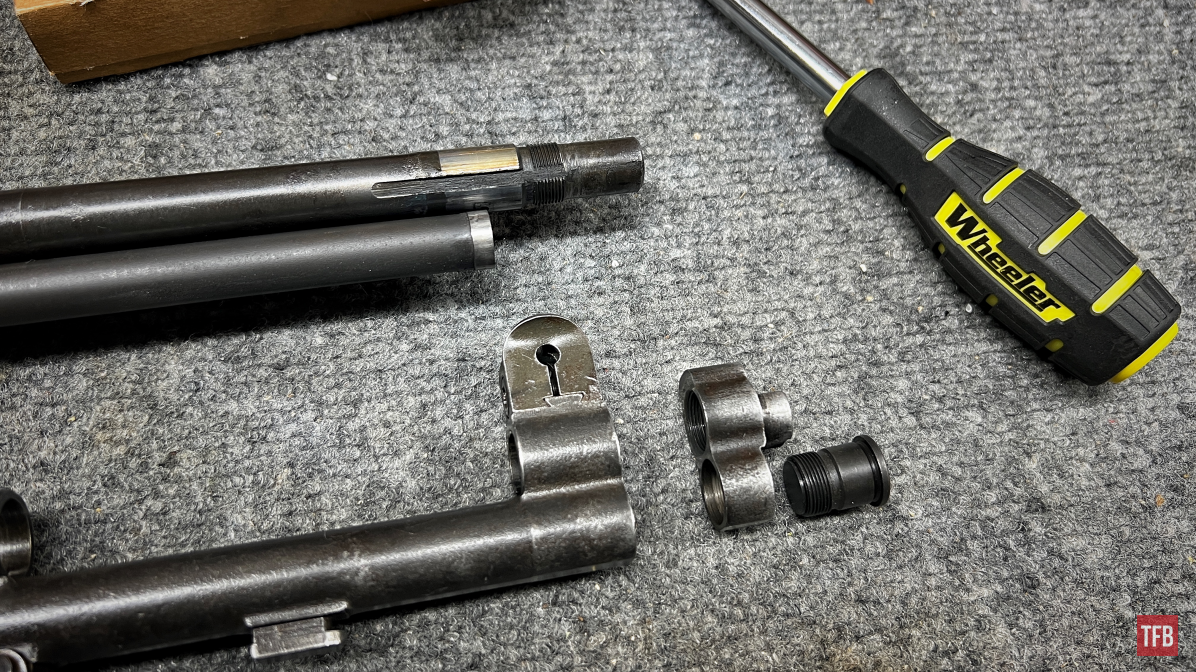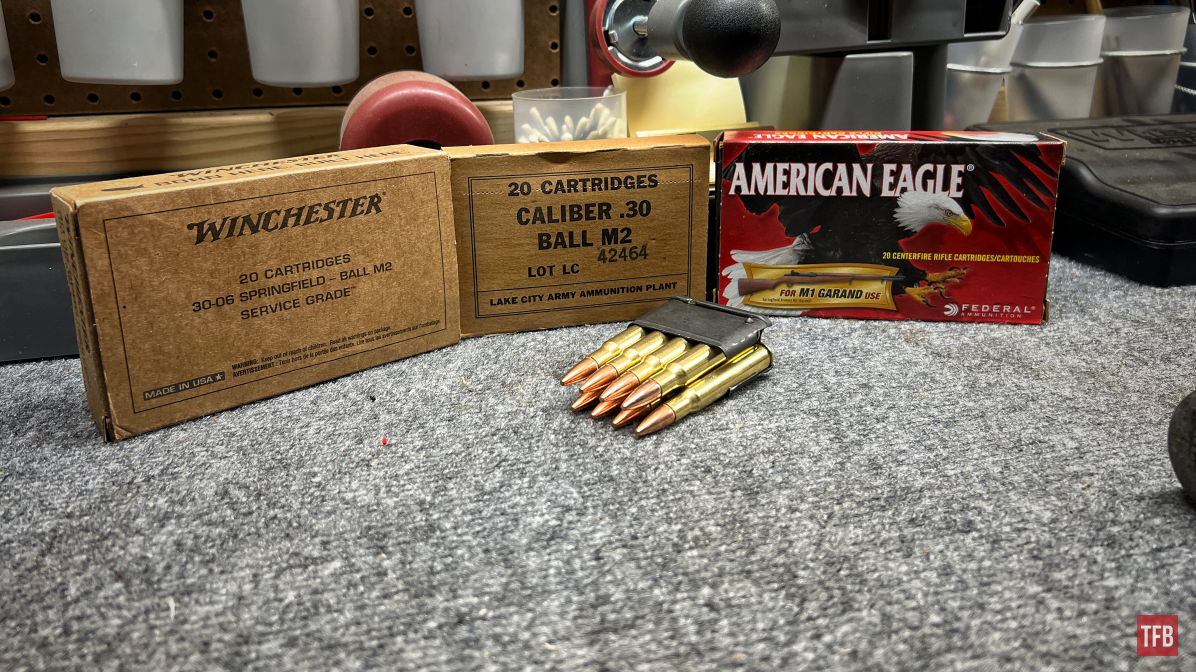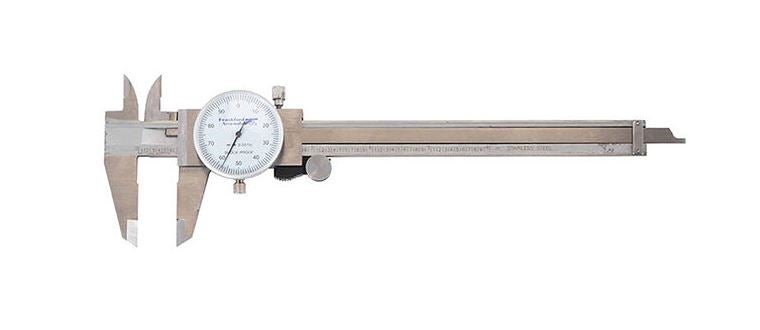Welcome everyone to the TFB Armorer’s Bench! As mentioned in the little blurb, this series will focus on a lot of home armorer and gunsmith activities. In this article sponsored by Wheeler, Tipton, Caldwell, and Frankford Arsenal, I decided to dive into the rabbit hole of attempting to explain the M1 Garand’s gas system, why average modern ammunition is not ideal for the rifle, and solutions to that issue. In the last few years working at a gun shop, I have noticed the increase in the popularity of older firearms among younger people. People will come in whether it is those young folks or older ones that just got a dream gun (an M1 Garand) from when they were younger and they will ask for 30-06 ammo in general. Yes, the rifle will function and shoot any type of .30-06 Springfield on the market but unfortunately, the gas system is not engineered to deal with the velocities and pressures produced by modern ammunition. The result? Their piece of nostalgia and history ends up damaged or broken. All of that being said let’s dive right into the M1 Garand gas system and ammunition solutions.
TFB Armorer’s Bench: M1 Garand Gas System and Ammunition Solutions
Welcome to our recurring series of Armorer’s Bench which is made possible and brought to you by Wheeler, Tipton, Caldwell, and Frankford Arsenal who are our sponsors. Here, we at TFB hope to inform, entertain, and even inspire any would-be gunsmith or armorer out there. Ideally, with the information I provide and with the help of our sponsors, you can have some useful knowledge pertaining to the conservation and improvement of firearms technology while at the same time sharing experiences and teaching each other new tips and tricks along the way in the comments. Digging deep into what it is to be an armorer or gunsmith has significance but what is important is what those people do to show they’ve earned that title. I am happy to share my experiences and knowledge and hope it is informative!
Make your personal safety a priority:
- Practice proper gun safety. Always make sure before the firearm hits your bench that it is unloaded and safe to be handled.
- Wear the proper safety equipment. The main one would be safety glasses (decent ones) since parts are often under spring tension and you may work with high RPM tools. Other honorable mentions would be latex gloves or a respirator when working with potentially harmful solvents and oils. Also hearing protection when working with loud machinery or test-firing firearms.
- Modifications, alterations, and customizations will void your firearm’s warranty 9.5 times out of 10. Please take that into consideration before attempting any at-home gunsmithing.
- If you are unsure about proper safety practices, disassembly procedures, or warranty standards, stop, put down the tools, and consult a competent gunsmith.
How it Works & What is The Problem
Designed in the 1920s and adopted by the United States military as their first standard-issue semiautomatic service rifle, the new rifle by John C. Garand would come to be designated as the U.S. Rifle, Caliber .30 M1. Nowadays this iconic rifle of World War Two is mainly referred to as the M1 or M1 Garand. The M1 Garand initially used a more complicated “gas trap” method for its operating system but was later simplified in favor of a gas port design.

Barrel gas vent for the M1 Garand gas system
The way this design works is gas from a fired cartridge gets diverted (near the end of the barrel) into a gas port which pushes against a piston that is attached to an operating rod which in turn is also attached to the bolt. When the operating rod moves to the rear via gas pressure, the bolt rotates and begins its journey rearward. This cycles the action and loads a new cartridge or aids in ejecting the en-bloc clip that the M1 Garand uses.

Piston/operating rod of the M1 Garand gas system
After military trials and adoption, the M1 Garand was arguably designed to use the boat tail 173-grain M1 Ball ammunition made for the 1903 Springfield rifle. Later, after that stockpile of ammunition was nearing its end, the flat base 150 grain M2 Ball cartridge was introduced. Both are “made” to be shot in the M1 Garand. There were other variations of the M2 ammunition whether it is tracers or armor-piercing. Debate away on the history and original ammunition, that is not the point of me mentioning this.

M1 Garand gas system at the front
Regardless of your opinion on what ammunition is “intended” for the M1 Garand, M2 Ball is commonplace nowadays since it delivers the correct “dwell time” and force to actuate the operating rod safely. Companies such as Winchester and Federal make M2 Ball ammunition or “M1 Safe” ammunition and there is a very good reason.
Modern commercial ammunition typically produces higher velocities and pressures since it is hunting ammunition more often than not. There is very little “range ammo” out there as far as 30-06 goes. The M1 Garand will cycle and shoot this more modern ammunition but the result is the operating rod will be traveling at a faster speed than it is intended for. The combination of speed and energy delivered by these commercial loads will result in the breaking or warping of the operating rod or much worse. This puts a beloved piece of history and nostalgia out of commission in a hurry.

The front portion of the M1 Garand gas system removed
Most folks who give you the “I shoot regular 30-06 through my M1 all the time” only shoot a full clip of 8 rounds through their gun once or twice a year. The bottom line is just because it has not happened yet, does not mean it will not. Introducing higher velocities and pressures to the operating rod is the same as introducing wear and tear. It can and will happen. Other parts have a better chance of sooner wearing out in your lifetime if you use them with the correct ammunition.
Solution: M1 Garand Gas System and Ammunition Solutions
That last heading was a long-winded way of saying there is a right lineup of ammunition that is okay for the M1 Garand and a wrong (majority of what is available) lineup of ammunition that will hurt the M1 Garand. So, what is the solution? There are a couple solutions to properly feeding and maintaining an M1 Garand.
- The easiest thing to do (when the world is more normal than it is now) is to purchase Winchester’s modern-day made M2 Ball or Federal’s American Eagle “For M1 Use” if you can find them on the shelf.
- Another ammunition-related option would be reloading your own M2 Ball to whatever specifications may be. There is plenty of published M1 Garand-specific ammunition data available out there. Hodgdon has a reloading data center that has a whole host of M1 safe loads. The link is right here!

Hodgdon Reloading Data Center – Rifle – M1 Garand Service Rifle (load data page)
- Besides properly loaded store-bought or home-reloaded ammunition, there is a different gas plug as a potential solution. There is a company out there called Schuster that made what is referred to as the Schuster plug. I have no idea if they invented it, I just know the Schuster is the most common gas plug replacement. These plugs replace the regular M1 Garand gas plug at the front of the muzzle and feature a threaded center hole surrounded by two or four-angled vent holes. These are made so you can basically tune your M1 Garand to properly and safely fire any store-bought modern-day ammunition. By tightening or loosening the center screw you are limiting or increasing the amount of excess gas that is vented out the front of the gas plug. I own one of these, and it works great, I highly recommend it!

Schuster gas plug for the M1 Garand gas system

Schuster plug (left) and normal plug (right) – M1 Garand gas system

Schuster plug (left) and normal plug (right) – M1 Garand gas system
- Lastly, the only other solution that comes to mind is the GarandGear gas plug which is very similar to the Schuster plug in that it is there to aid with excess gas but in a different way. With this one, the gas plug itself has a hollowed-out base that increases the volume available for gas to take up in the gas cylinder. The downside with these is that they are fixed and nonadjustable so a higher pressure piece of commercial ammunition still has the potential to harm your rifle. Famously Ian and Karl over at InrangeTV tested both this plug and the Schuster plug to see their effectiveness. I recommend checking out that video!
Conclusion: M1 Garand Gas System and Ammunition Solutions
In conclusion, I just want to say that this was not so much an exercise in the demonstration but rather in talking about what your options are when preserving a piece of history. It breaks my heart and worries my old soul when I hear someone looking for regular commercial ammunition for their M1 Garand. These rifles are simply not made for the type of beating that ammunition delivers and some folks may not know that. Hopefully, this reaches some. I apologize I did not have time to properly research the history of the original ammunition selection, adoption, and so on but this really is not the place for that anyhow. Hopefully, this brief telling of a topic inspires you, folks, to kindly talk to each other about how you feed your old M1 and what you do to preserve your piece of nostalgia. Until next time, take care!
As always, thank you for reading TFB! Be safe out there, have fun while shooting, and we will see you next time for the TFB Armorer’s Bench brought to you by Wheeler, Tipton, Caldwell, and Frankford Arsenal! Also, let us know what you think in the comments below! We always appreciate your feedback.
Caldwell Pro Range Glasses, Clear
The Caldwell® Pro Range Glasses feature a stylish wrap-around design and are a great choice for all shooters. They feature an adjustable nose piece and temples for all day comfort. The scratch resistant lens meets ANSI Z87.1 standards and offers 99.9% UV protection.
72 Piece Professional Gunsmithing Screwdriver Set
The Wheeler 72 Piece screwdriver set features 54 hollow-ground flat bits, 4 phillips, 3 torx, and 8 specialty bits all made from durable S2 tool steel with a 56-58 Rockwell “C” hardness rating. The precision-engineered bits have a concave shape that allows for insertion all the way into the screw slot of rmaximum contact to prevent burred, buggered, busted up screw slots. The kit also includes 2 non-slip, overmolded plastic handles that come in a convenient hinged storage case whcih includes a bit location guide.
Universal Bench Block
Made of non-marring urethane, the Universal Pistol Bench Block is perfect for use on M1911 pistols as well as other firearms such as 10/22s.
Tipton ULTRA GUN VISE
The Tipton® Ultra Gun Vise features a completely modular interchangeable design to allow virtually any shape firearm or crossbow to be cleaned and worked on with ease. The ball and socket articulating clamp pads allow for the pads to adapt to any surface. The dual clamp technology rigidly holds any firearm shape in place, while the rigid steel tube frame structure allows for complete access to your firearm or crossbow. The front and rear clamps are both height and length adjustable, and feature fast-turn knobs allowing for quick clamping. The solvent-resistant accessory and tool trays are movable and removable to stand up to even the toughest jobs.
Precision Micro Screwdriver Set
Frankford Arsenal Stainless Steel Dial Caliper
Reloading ammunition requires attention to many critical cartridge dimensions, including case length, neck and base diameters, overall length, primer pocket depth, etc. Verifying these dimensions is quick and convenient with the Frankford Arsenal® Stainless Steel Calipers. These calipers are accurate to within .001″. The calipers allow you to measure inside and outside diameters, plus depths. You will find them useful for many measuring tasks on and off the reloading bench. Packaged in a convenient and protective case.












